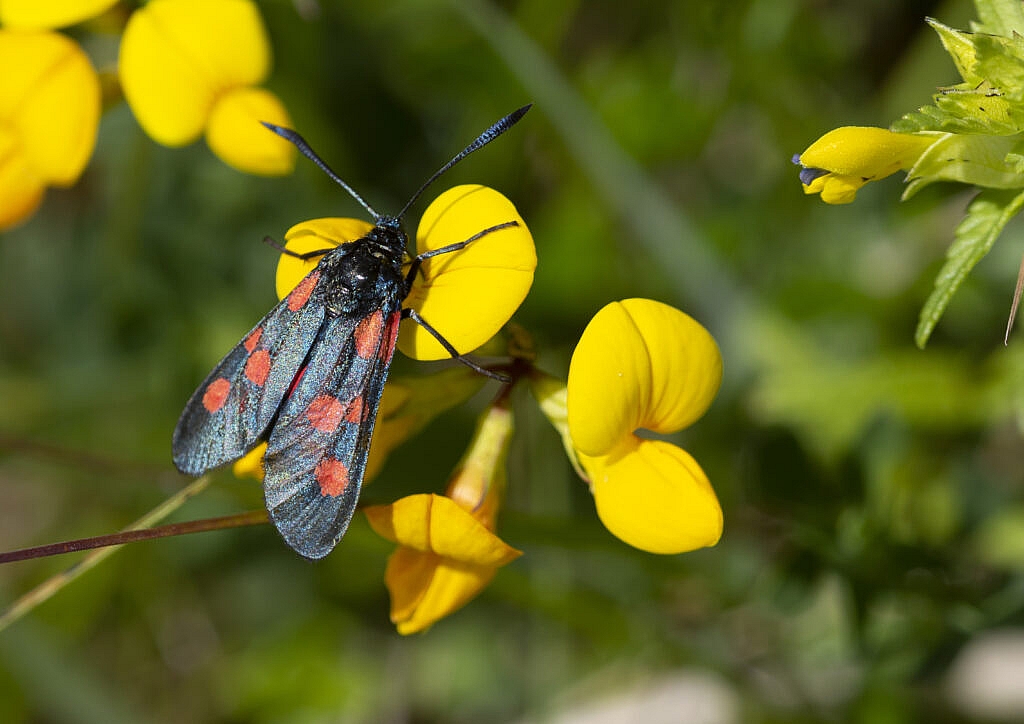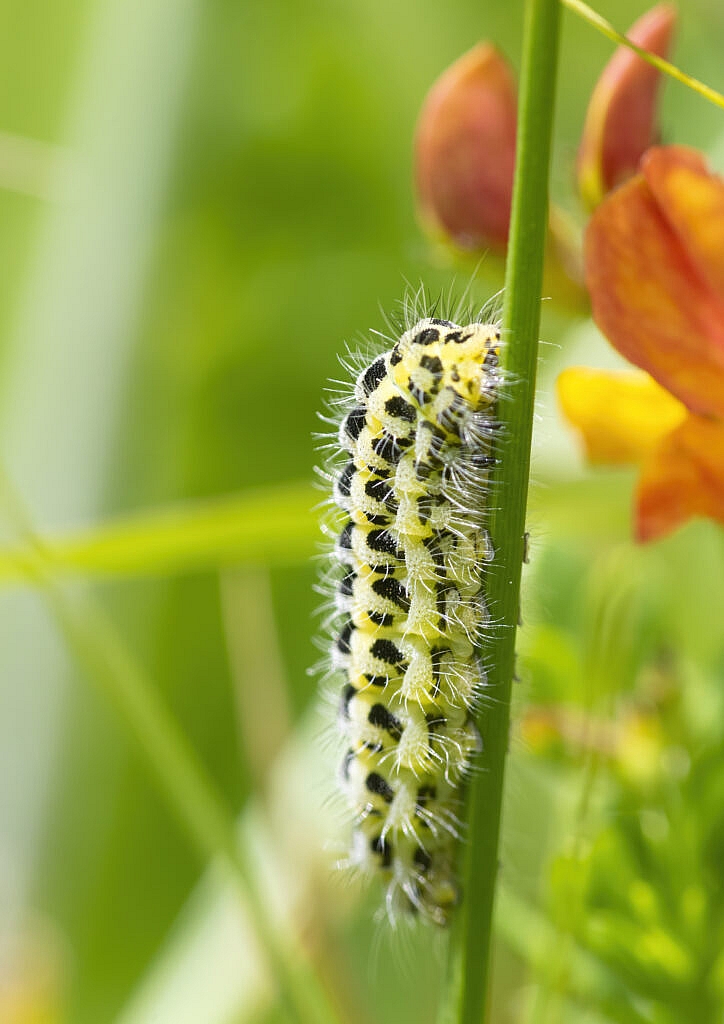This time is year is characterised by many things. The occasional sunny day (it is Summer, apparently). Hayfever. England’s cricketers gloriously losing or (this summer at least) emphatically winning. Wild orchids in their Sunday best. And the sight, on many of our grassy downlands, of a butterfly that seems have to come over from the dark side. It’s black with red spots on its wings, and when you look a little more closely, you realise that’s its not a butterfly, it’s a moth. The five- or six-spot burnet moth, depending on (wait for it) how many spots it has.
As a quick aside, the folks who name moths annoy me, because the five-spot burnet moth has got five spots only if you count one wing. And the moth has four wings, two upper wings which are spotty and two underwings which have a large red panel edged in black. In my books it’s at least a ten-spot burnet moth and possibly a twelve-spot burnet moth, depending on whether you count a blob as as a spot. But Britain has a national shortage of taxonomists (the folks who classify living things) so perhaps I’d better keep my grump to myself.

Still here, perhaps intrigued by the post title? Good.
It was an embarrassingly long time before I realised that some moths fly in the day time. The burnet moth is one of them, and it’s a big beastie, with a wingspan of over 3cm. Now being black against pale grass make you rather obvious. Being black with red spots makes you very obvious. Early summer is when birds are trying to feed growing chicks, so there is only one reason to be that obvious, and it’s to warn predators that you’re not good to eat. Turns out that the Burnet moths (there are two version of the five-spot, and a six-spot coupé model as well) aren’t good to eat, because they have rather cleverly turned the tables on their favourite foodplants.
Bird’s foot trefoil is a pretty flowering plant with bright yellow flowers that when developing always look to me like a bunch of bananas. It’s a common source of nectar for many species of butterfly. But growing close to the ground, it’s also an easy target for slugs and snails. So like many plants, it has evolved a defence. In the case of the trefoil, it’s that go-to choice of Victorian poisoners, cyanide. I was lying on a patch of trefoil recently, and had I but known it, the plant reacts to damage, including crushing, by letting out small quantities of Hydrogen Cyanide as a gas. Eeek! In fact the quantities are tiny, but they are enough to dissuade many would-be eaters of trefoil from doing so. But not, it turns out, the caterpillars of the burnet moths.

These beautiful caterpillars – a creamy lemon-green with black markings – have learned to cope with the trefoil’s cyanide and turn it to their own advantage. They store it and use to make themselves taste nasty if someone tries to eat them, and they keep that ability when they become moths. Indeed, the female burnet moth has been know to add a just a pinch of cyanide to the pheromones she releases to advertise her readiness to mate, presumably to warn other creatures that might follow her pheromone trail that it’s not a wise move. Now that’s what I call spicing up your love life.
So it turns out that when I was lying on trefoil and photographing the burnet moth and its caterpillars in Gloucestershire last weekend, I was inadvertently poisoning myself. Now that’s the title for an Agatha Christie if I ever I heard it: “Death by Burnet”. Has a good ring to it, doesn’t it?





1 comments On Death by Burnet
I didn’t realise that burnet moths were keen on birdsfoot trefoil. We have a lot of that growing on our Wildlife Plot, I will search it for burnet-evidence at the weekend but will try not to breathe in while I wait…!
Comments are closed.